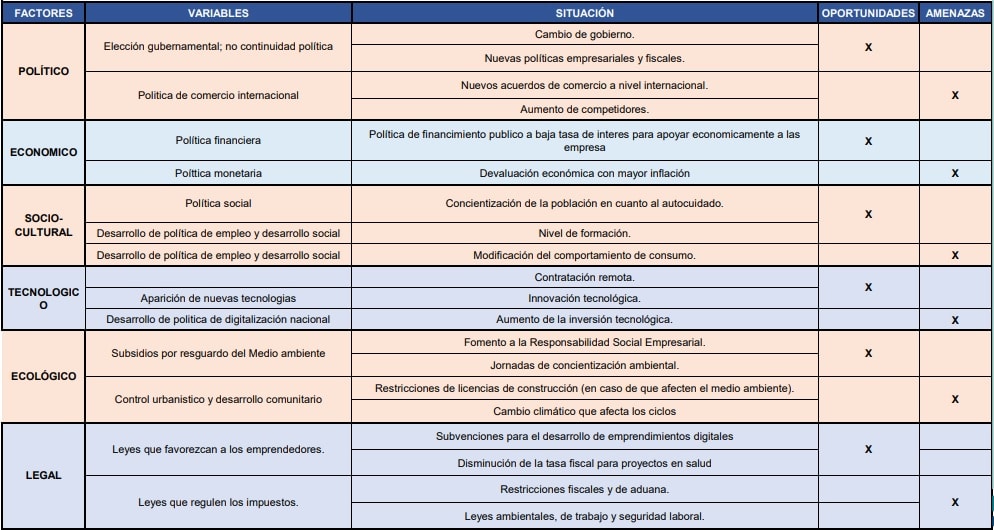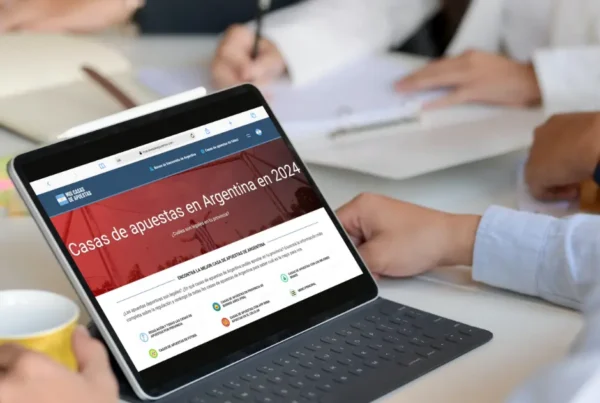A PESTEL analysis or PESTEL analysis (formerly known as PEST analysis) is a framework or tool that is used to analyze and monitor macro-environmental factors that can have a profound impact on the performance of an organization. This tool is especially useful when starting a new business or entering a foreign market.
It is often used in collaboration with other analytical business tools, such as the SWOT analysis and Porter's Five Forces. to give a clear understanding of a situation and related internal and external factors. PESTEL is an acronym that stands for political, economic, social, technological, environmental and legal factors. However, over the years people have expanded the framework with factors such as Demography, Intercultural, Ethical and Ecological, resulting in variants such as STEEPLED, DESTEP and SLEPIT. In this article, we will limit ourselves simply to PESTEL, as it covers the most relevant factors in business in general.
Origin
Is macroenvironment diagnostic tool originates from an essay released in 1968 by Liam Fahey and VK Narayanan called "Macro-environmental analysis in strategic management«. With the passage of time it has evolved until today adding letters in the acronym that gives it its name.
What is PESTEL analysis?
Basically it is a descriptive analysis of the context of the company. The PESTEL analysis, you can find it at the same time with the name of PEST (in short), and in some cases at the same time known as PESTEL.
When we refer to the environment of an organization, we refer to all those external elements that are of great relevance for the organization, entrepreneurship or business. The analysis of the environment has always been a strategic factor. Today it is even more important when we see the speed in the rate of change.
That said, incorporating PESTEL analysis is vitally important to the formulation of short, medium and long term strategies
Definition of PESTEL analysis
A PESTEL is the detailed description of the environment of the company through the consideration of political, economic, socio-cultural, technological, environmental and legal elements.
Take into account that it is nothing more than an instrument for the strategic analysis of the global economic environment where the company develops.
It is used to evaluate the growth and orientation perspective of the organization's operations and at the same time, it allows us to identify external elements that could impact the company's activity.
What is the PESTEL test used for?
The PESTEL Analysis is used to develop the strategic, organizational and market planning of a company, in order to evaluate well the current environment in which the company operates. That is why it is recommended that before executing or carrying out any market strategy a thorough analysis of its environment be carried out.
Managers or decision makers use this tool to analyze, rethink, redesign and redefine effectively and efficiently, the necessary changes in the environment where the company or business is developed.
How to do a PESTEL analysis?
To perform a PESTEL analysis of the external context of the company, we must know and understand how these factors impact or can affect the organization or if on the contrary they can become opportunities.
We recommend that you make a list establishing the priority and relevance of each element, so that you know which are the most relevant factors and which impact the most your project.
PESTEL analysis elements
The PESTEL Analysis, originally known as PEST by the abbreviation of the factors that compose it, such as: Political, Economic, Socio-cultural and Technological.
With the passage of time the name was readjusted and incorporated the Ecological and Legal factors, becoming PESTEL
Political factors
These are the national and international government policies (of each country) that are directly related to the company.
Depending on the industry, it may have a greater or lesser impact depending on the sector where you are developing or want to develop the business. Keep in mind that according to the country where you are, political volatility will have a more or less intense impact.
Examples of political factors
-
-
- Government stability / instability
- Level of corruption
- Fiscal policies
- Freedom of the press
- Government regulation and deregulation
- Special rates
- Political action committees
- Government participation in unions and agreements
- Regulation of competition
- Voter participation rates
- Amount of government protests
- Defense expenses
- Government subsidy level
- Bilateral relations
- Import-export regulations / restrictions
- Commercial control
- Lobby activities
- Size of government budgets
-
Economic factors
For this we will observe the macro factors of the economy, according to the country where the business is located. Elements such as GDP, interest rates, employment, exchange rates, access to resources, level of economic development, etc., should be taken into account when putting together your analysis.
These types of factors will be directly linked to the commercial success of your company.
Examples of economic factors
-
-
- Growth rate
- Interest rate
- Rate of inflation
- Exchange rate
- Credit availability
- Level of disposable income
- Propensity of people to spend
- Federal government budget deficits
- Gross domestic product trend
- Unemployment trend
- Stock market trends
- Price fluctuations
-
Socio-cultural factors
Here it is important to pay attention to the evolution of social trends that directly affect business strategy.
In this analysis we will focus on our users / customers, those people who are interested in buying our service / product.
Examples of Socio-cultural Factors
-
-
- Population size and growth rate
- Birth rates
- Death rates
- Number of marriages
- Number of divorces
- Immigration and emigration rates
- Life expectancy rates
- Age distribution
- Wealth distribution
- Social classes
- Per capita income
- Family size and structure
- Lifestyles
- Health awareness
- Average disposable income
- Attitude towards government
- Attitude towards work
- Shopping habits
- Ethical concerns
- Cultural norms and values
- Sex roles and distribution
- Religion and beliefs
- Racial equality
- Use of contraceptives
- Education level
- Minorities
- Crime levels
- Attitudes towards saving
- Attitude towards investment
- Attitudes towards retirement
- Attitudes towards free time
- Attitudes towards product quality
- Attitudes towards customer service
- Attitudes towards foreigners
- Job skills
-
Technological Factors
The speed with which technology is developed, makes the company, business or project, can fall into obsolescence and digital divide. Think of a business that did not have an online channel during the 2020 pandemic.
Another factor to take into account is the technology transfer that is linked to the continuous learning that must be had for the installation, use and application of the technology.
Examples of technological factors
-
-
- Technological incentives
- Automation
- R + D + i activity
- Technological change
- Access to new technology
- Innovation level
- Technological awareness
- Internet infrastructure
- Communication infrastructure
- Technology life cycle
-
Ecological factors
These are the factors related to the preservation and environmental impact. We will have to take into account how our activity will affect or be affected by ecological issues.
Examples of Ecological Factors
-
-
- Climate
- Environmental policies
- Climate change
- NGO pressure
- Natural disasters
- Air and water pollution
- Recycling regulations
- Attitudes towards organic products
- Support for renewable energies
-
Legal factors
Here we talk about the elements related to the law of the country where the company is located. We must take into account: permits, concessions, labor legislation, health, intellectual property, etc.
Examples of legal factors
-
-
- Discrimination laws
- Antitrust laws
- Labor laws
- Consumer protection laws
- Copyright and Patent Laws
- Health and safety laws
- Education laws
- Consumer protection laws
- Data protection laws
-
Schematic of a PESTEL analysis
For the analysis, the six factors mentioned above and apply them to the context where the strategic plan will be executed and if these can be an opportunity or a threat.
Not always all factors impact the business.
You should take the time to understand which of these affect your company or venture. With this done, define the variables that you think may affect and the situation that could occur with each of these variables in your business.
📥Download PESTEL Excel Template
Example of a PESTEL
Below we can see a generic example of PESTEL dashboard
Advantages of making a PESTEL
What advantages does PESTEL analysis give us?
- We only have to identify how each factor affects or favors the company.
- Anticipate: With a critical analysis we can see what elements influence our company. In this way we can anticipate and devise specific strategies to act quickly.
- To adapt: With the identification of the factors (opportunities and threats) we can create a new work plan to act according to the needs of the organization.
- Take decisions. The business strategic plan and its respective implementation are adapted based on the identification of opportunities and threats
When can we do a PESTEL test?
We can make a PESTEL at any stage, level or moment of the company. When creating a company, or launching a new business line, the market, direct competition, required investment, necessary technology, etc. must be analyzed and studied. That said we see that the PESTEL analysis is performed constantly.
Although this is not an absolute truth we will say that a new company or start-up will do it quarterly a PESTEL analysis and the most advanced or consolidated companies will do so semi-annually or even annually
How do we use PESTEL analysis together with a SWOT?
We can say that both make it easier for us to evaluate the conditions we have and the environment in which we develop our business, and we do it in order to know how viable our project is. They are useful to review the strategy, positioning and direction of a company, line of business, or idea.
Although the SWOT or SWOT is more popular, does not detract from the PESTEL that it is an external analysis of the “environment” that the project will face, in fact It is recommended to perform a PESTEL analysis before a SWOT analysis.
The link between the two is given because once the PESTEL is diagrammed, you will be able to obtain the opportunities and threats that are incorporated into the SWOT or SWOT matrix.
After both tools are used, the results of their analysis are taken to the development of a Plan or Project.
Conclusions
Keep in mind to keep your dashboard updated, you should always measure and readjust your strategic plan, because this will allow you to stay one step ahead of the situation that may arise. In addition, the correct use of this tool gives you the necessary inputs for the SWOT analysis
I hope this post has been useful to you.







